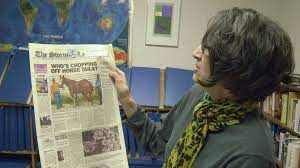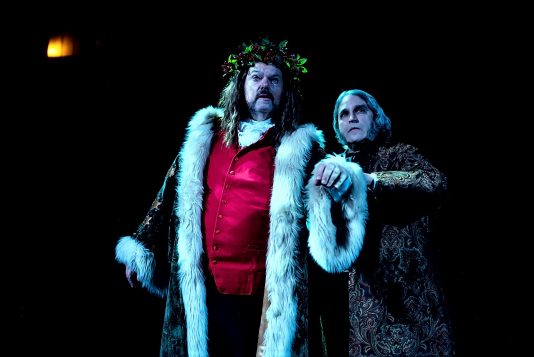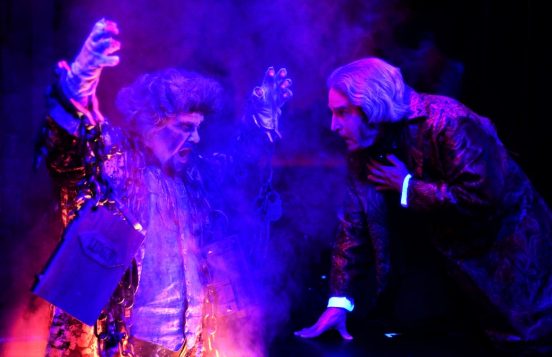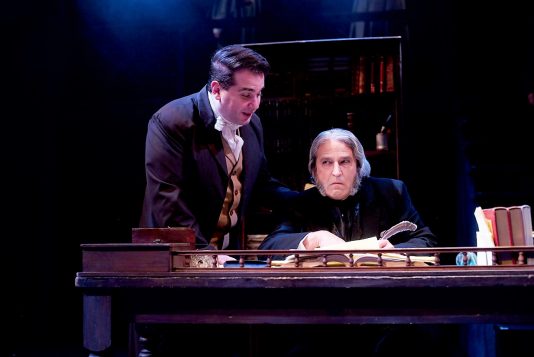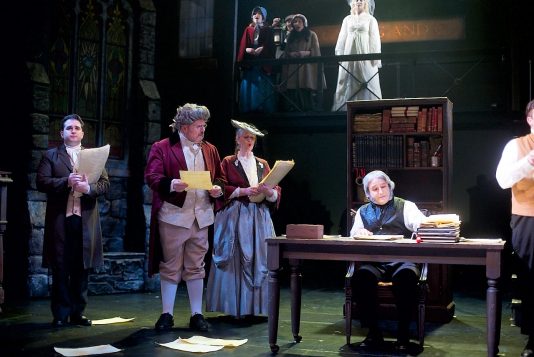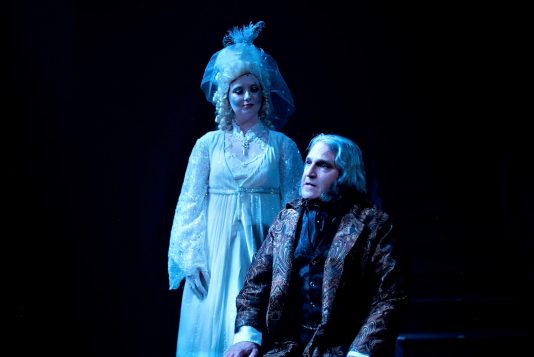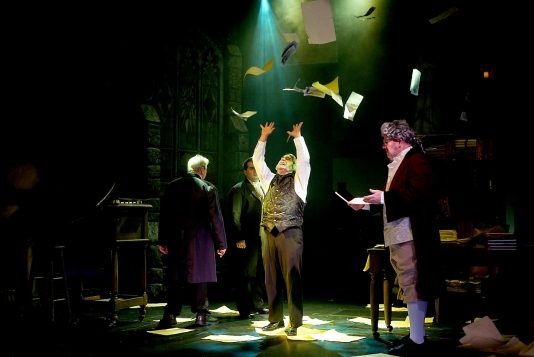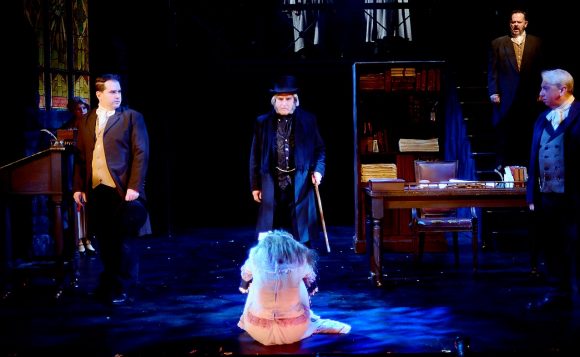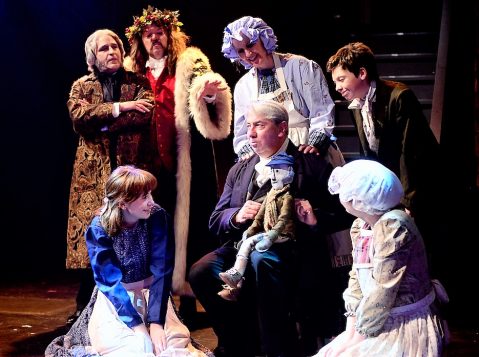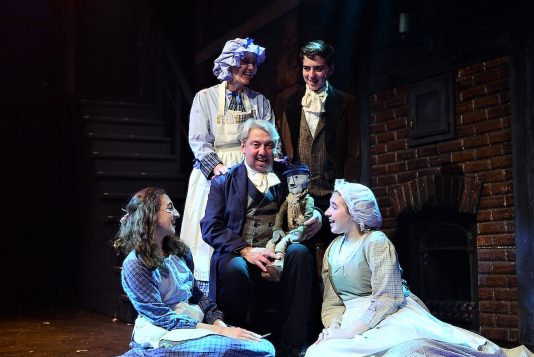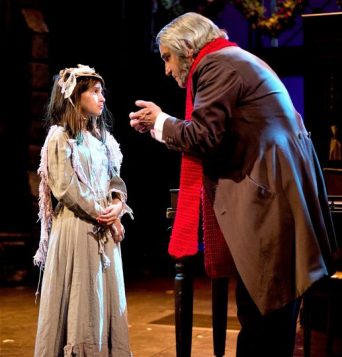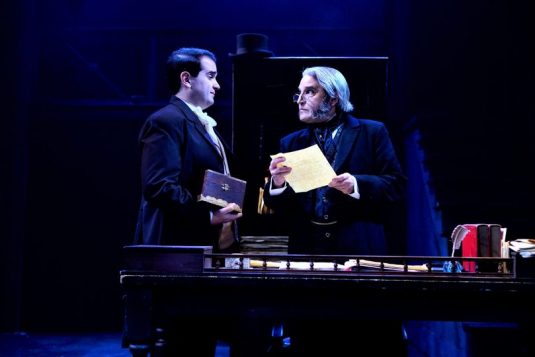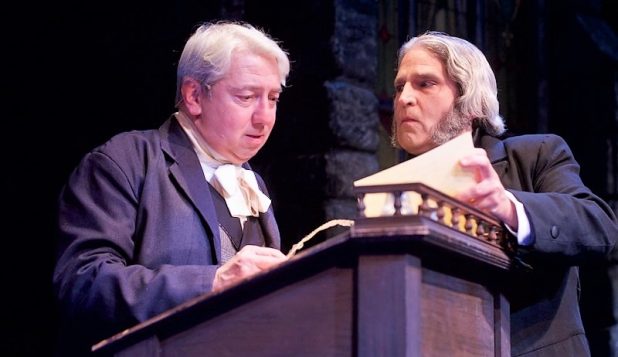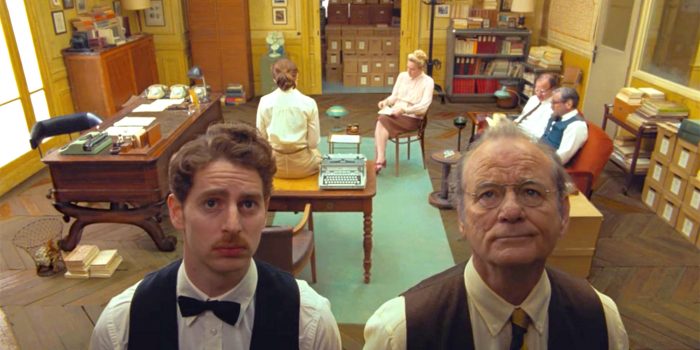By Heidi Sutton
Every five years or so, Theatre Three’s Children’s Theatre reaches into its vault filled with scripts and pulls out a gem. This time it’s a musical twist on the classic story of Puss In Boots. The show opened on Jan. 16.
Although there have been many versions of the European fairy tale over the centuries, the most well known is The Master Cat or Puss in Boots from The Fairy Tales of Charles Perrault in 1697. When Puss was reintroduced in Shrek 2 in 2004, a whole new generation was smitten.
Now the clever ‘tail’ returns to Theatre Three’s MainStage with a fresh score and choreography and does not disappoint. Written by Jeffrey Sanzel and Douglas J. Quattrock, the show was first performed in 1991 and has withstood the test of time.
In the kingdom of King Vexmus, a kind-hearted young man named Christopher lives on a farm with his father and his two brothers, Shank and Amos. Every day his brothers force him to work the fields while they take naps. When their father dies, Shank and Amos inherit the farm while Christopher gets his father’s cat Puss and is promptly kicked out.
With no food, money or a place to live, Christopher begins to lose hope until he discovers that Puss can talk. He confides in the cat that he has fallen in love with the king’s beautiful daughter, Princess Anafazia, who he met briefly when her entourage drove past the farm (in a great flashback scene). Puss agrees to help in the name of love and hatches a scheme to have Christopher pose as the rich and mysterious Marquis of Carabas to win Anafazia’s heart. Will everything go as planned? Will there be a happy ending?
Directed by Sanzel, the fast-paced show is wonderful on so many levels. Steven Uihlein is perfectly cast in the role of Christopher and also serves as storyteller. His plight gains the sympathy of the audience right away. Liam Marsigliano and Jason Furnari make a great comedic team as Amos and Shank. Their futile attempt to farm the land after Christopher leaves is hilarious.
Michelle LaBozzetta, in the role of Puss, the cat of all trades, steals the show with her energetic and flamboyant personality. In one of the cutest scenes, her character acquires her famous boots by causing a ruckus outside Shank and Amos’s door.
Sanzel and Josie McSwane are excellent in the roles of the bickering King Vexmus and Queen Ida (or should I say Queen Ida and King Vexmus) who in the end agree to disagree. Haley Saunders is terrific as the spoiled Princess Anafazia, who quickly reveals that this royal’s beauty is only skin deep. Rachel Max as Ida and Louisa Bikowski as Missy, the no nonsense wives of Shank and Amos, and Heather Rose Kuhn as the sweet Julia, Princess Anafazia’s lady-in-waiting, are a fine supporting cast.
Choreographed by Sari Feldman and accompanied on piano by Douglas Quattrock, the 12 musical numbers are the heart of the show, with special mention to the duets “Puss in Boots” with Puss and Christopher and “Take a Moment for Yourself” with Puss and Julia, and the lively group number, “Song of the Marquis of Carabas.”
The charming costumes, designed by Jason Allyn, from the royal gowns in shades of lavender complete with wigs and crowns to the peasant garb in hues of brown, tie the story together perfectly. And wait until you see Puss’s fierce and fabulous outfit!
This special show doesn’t come around often. Catch a performance before it’s gone.
Running time is one hour and 20 minutes with a 15 minute intermission. Meet the entire cast in the lobby on your way out for a keepsake photo.
—————————
Theatre Three, 412 Main St., Port Jefferson presents Puss In Boots on Jan. 22, 29 and Feb. 5 at 11 a.m. and Jan. 23 at 3 p.m. Children’s theatre continues with Dorothy’s Adventures In Oz from Feb. 23 to March 26 with a sensory friendly performance on Feb. 27 and The Adventures of Peter Rabbit from April 16 to May 7 with a sensory friendly performance on April 24. All seats are $10. For more information or to order, call 631-928-9100 or visit www.theatrethree.com




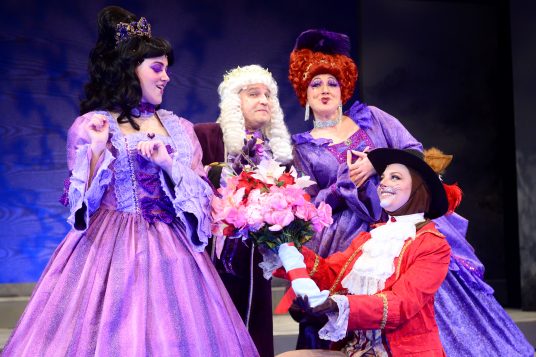

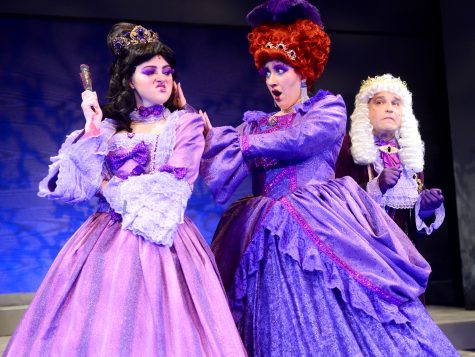
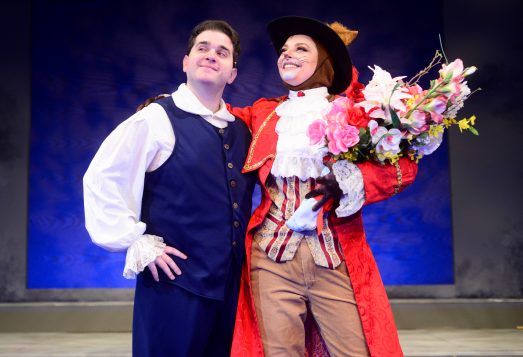

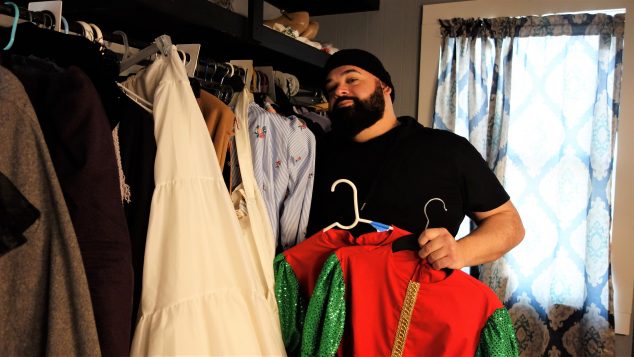
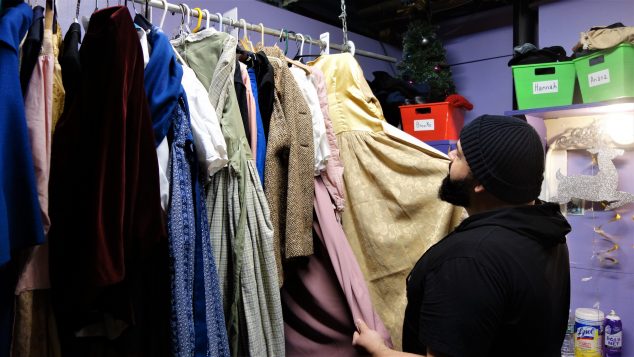
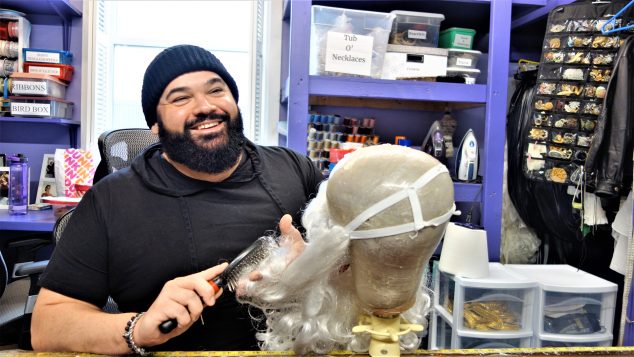
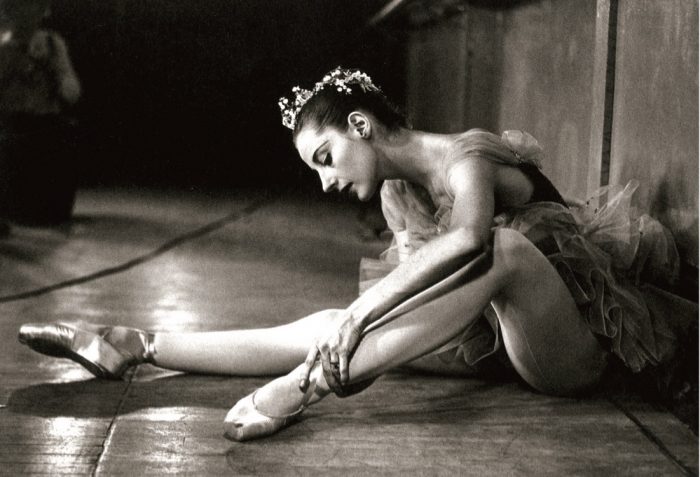

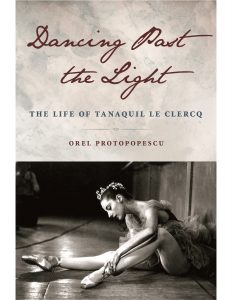


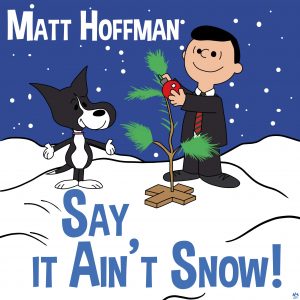 The sense of discovery in “The Christmas Song” is unique and surprisingly introspective. “Silver Bells” readily zings from a pastoral stroll in the snow to the lights of the city, showing off his jazz chops with masterful scatting. The simplicity and honest clarity of “O, Holy Night” is the perfect contrast to his letting loose with the final song, an exuberant, wry, “Run, Rudolph, Run.” In every number, Hoffman doesn’t just sing—he paints a vocal picture that is rich, evocative, and inviting.
The sense of discovery in “The Christmas Song” is unique and surprisingly introspective. “Silver Bells” readily zings from a pastoral stroll in the snow to the lights of the city, showing off his jazz chops with masterful scatting. The simplicity and honest clarity of “O, Holy Night” is the perfect contrast to his letting loose with the final song, an exuberant, wry, “Run, Rudolph, Run.” In every number, Hoffman doesn’t just sing—he paints a vocal picture that is rich, evocative, and inviting.













